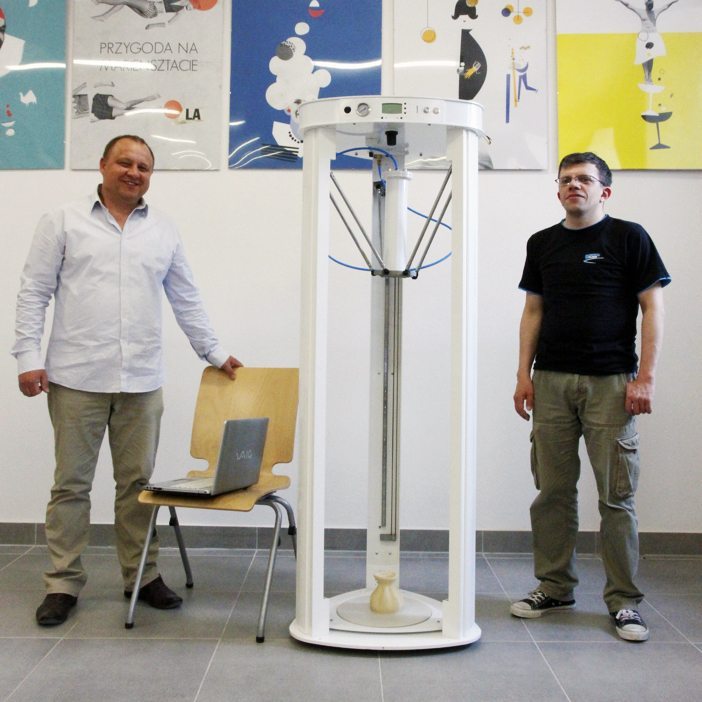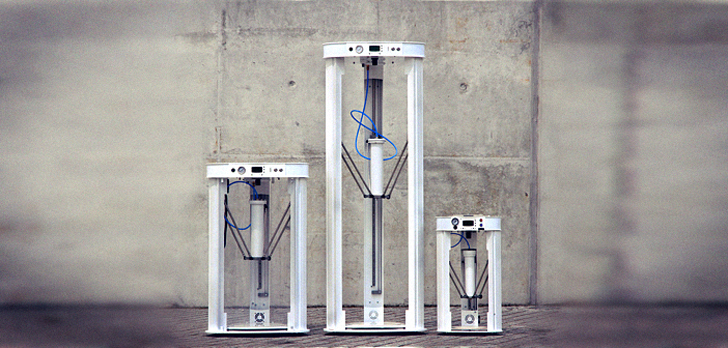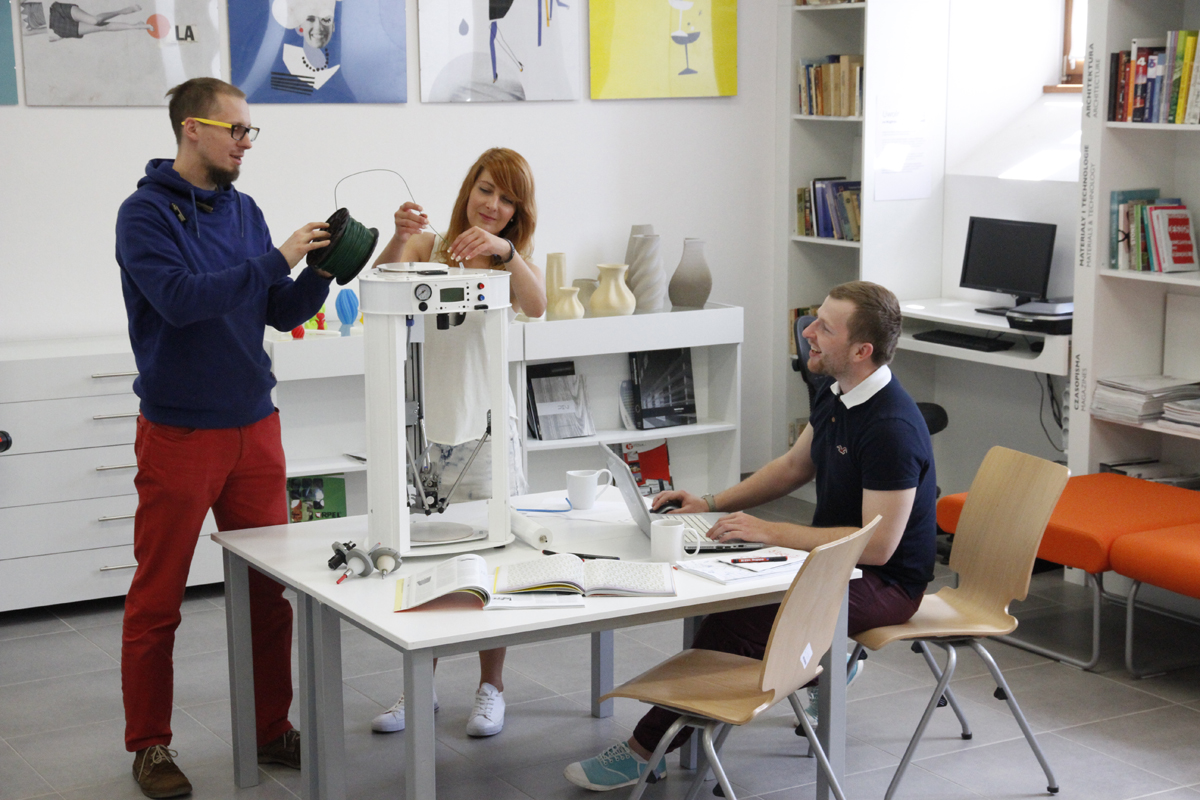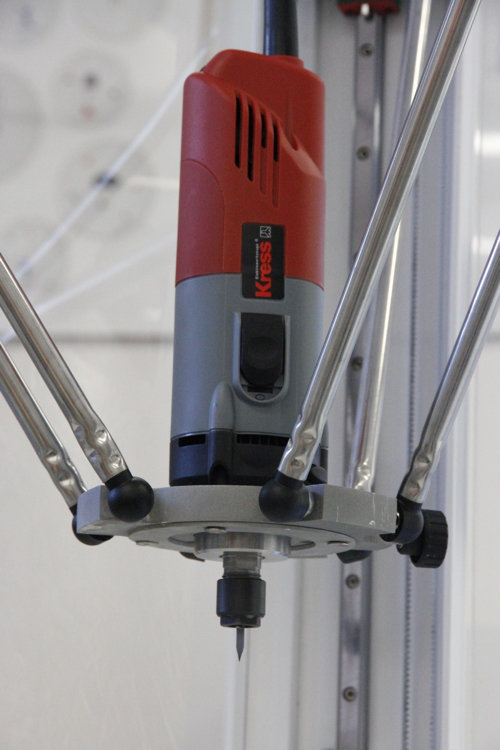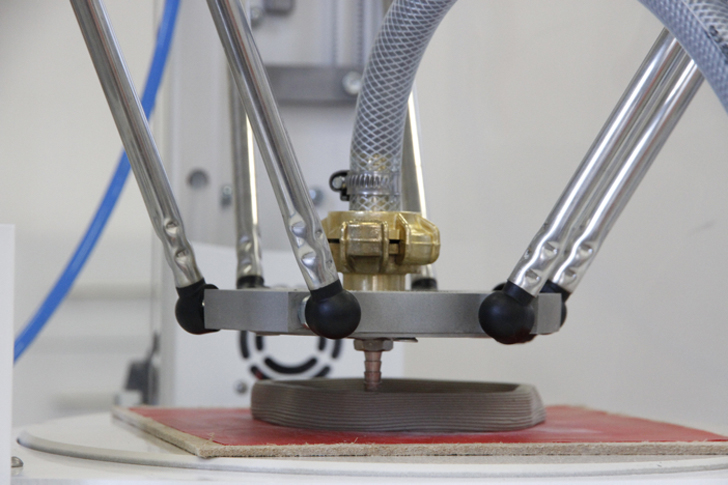Editor’s Update 8/4/15: The whole GAIA Multitool family is now live on Kickstarter! The GAIA Mini, which really isn’t all that mini compared to other desktop 3D printers with a working area of X,Y ∅ 20, Z 20 cm, is available at an early bird price of $1,500. They’ll go quick, though, as there are only 4 left at that price at the time of this writing. From what I’ve heard from Pawel, this is one company to keep an eye on and this Kickstarter might just give them the funds they need to establish themselves in the business. Head over to the campaign and check it out or read Pawel’s article below to learn more.
A 3D printer that prints from clay or ceramics is nothing new on the market and neither is a device with interchangeable tool heads. There are several examples like the Italian WASP Project, which is able to 3D print three dimensional objects from clay, or Polish ZMorph, which has several special toolheads for different applications. However, the combination of these two properties is still quite unique, and there maybe just one such machine on the market that posses them both: the GAIA Multitool from TYTAN 3D.
The GAIA Multitool hit the Polish 3D printing market last year, showing its unique ability to 3D print models from clay and ceramics, among other materials. It was developed by two well-known and respected men in the Polish 3D printing community, Janusz Wojcik and Pawel Rokita, who are responsible for creating the biggest 3D printing fair in Poland – Days of 3D Printing (“Dni druku 3D”). Their achievements earned them two prestigious awards in CD3D’s polls: Men of 2014 in the Polish 3D Printing Industry, and the Best New Polish 3D Printer for their GAIA machine.
On March 2015, TYTAN 3D released a completely new version of its device, the GAIA Multitool, which broadened the functionality of the machine with 10 interchangeable tool heads. Last month, the company showed the world the GAIA Multitool MAXX, a huge 3D printer with 105 x 45 cm building area and an impressive height of 175 cm. Now, the time has come for the third edition of their unique device, the GAIA Multitool MINI, a compact version of their flagship product that can successfully fit onto a user’s desk! So far, no one has yet stepped up with this type of device in such a small format.
The working area of the GAIA Multitool Standard is 30 cm x 36-40 cm in the Z axis (height is dependent on the toolhead used). The GAIA Multitool MAXX has build area of 45 x 110 cm. The newest GAIA MINI has a pretty standard working area for low-cost 3D printers at 20 x 20 cm, and, by modifying a number of parameters and implementing specific design solutions, its creators have managed to reduce the weight of the machine to 20 kg – which, given the class of the components used and the delta kinematics, is quite an achievement.
The GAIA Multitool was created for people who are not satisfied with FDM 3D printing technology and want to work with a greater multitude of materials. With a standard 3D printer, fabricating very precise objects, metals, reliefs, or inscriptions is not possible. Users are mostly limited to thermoplastics in the form of ABS and PLA filaments, along with some composites and other similar materials. To achieve true multi-material functionality, a user would have to have a 3D printer, CNC milling machine, a laser cutter, an engraver, and a number of other tools.
GAIA Multitool is equipped with all of the processing technologies mentioned above, and the MINI makes it possible to use these technologies on a desk or in a simple, backyard workshop. The tools that GAIA Multitool MINI is equipped with are as follows:
- A 3D printing head for FDM technology with 1.75 mm filament (ABS and PLA)
- A 3D printing head for ceramics, clay, porcelain and other ceramic materials, with which users can install a cartridge of 300 ml. In such a cartridge, a user can use any material composed according to his or her own needs: a mixture of metal, marble dust and resin, various blends of paper, or even polymer clay. They can even experiment with food pate due to the fact that the cartridge is sealed plastic container and is not exposed to contamination. Of course, this print head must be connected to a mini compressor with compressed air.
- A milling head that transforms a 3D printer into CNC milling machine. TYTAN 3D suggests the installation of a very strong (800W) milling unit with a variable speed range from 10,000 to 29,000 RPM and the ability to mount cutters with a diameter of 8 mm. This head allows for milling and engraving wood, plastic, and even non-ferrous metals
- What’s more, the GAIA Multitool can be attached to a wooden table with a vise, making such milling processes even easier.
- An engraving head designed for shallow engraving of hard materials. A user can make precise drawings and inscriptions on metal, vases, lighters, steel plates and many other objects.
- A laser head that is designed for engraving wood, leather and plastics. It can also be used to cut paper components.
The GAIA Multitool MINI is also equipped with ArtCAM Express software, a professional tool designed to handle all features of the device, except the print heads. It’s a very intuitive program that lets users convert the most popular 3D files so that they can be read by the GAIA Multitool MINI. ArtCAM Express also supports files for drawing and engraving.
The GAIA Multitool MINI is built entirely from aluminum and has precision mechanical components used in professional CNC machines. It uses 32-bit electronics and a delta system and the proper placement of components allows for simple and easy cleaning of the 3D printer after using the different heads. Exchange of each of the heads or to attach it to another table is a simple operation that takes only a couple of seconds.
On August 1st TYTAN 3D is going to launch a Kickstarter campaign offering all three versions of the GAIA Multitool: the Standard, MAXX and MINI. As exciting as this is, I also know that Janusz and Pawel have one more big announcement concerning their machines that will be revealed later this month.



